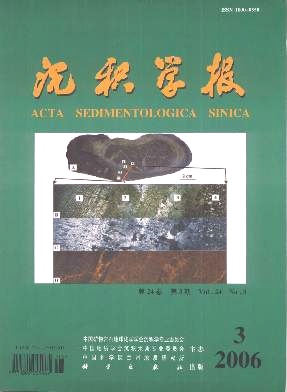Highresolution Climatic Record from a Stalagmite in the Past 2000 Years in Libo, Guizhou Provience
- Received Date: 1900-01-01
- Rev Recd Date: 1900-01-01
- Publish Date: 2006-06-10
-
Key words:
- stalagmite /
- dating ages of ICPMS or TIMSU series /
- high resolution paleoclimate environment /
- Dongge cave in Libo /
Abstract: The time sequence of high resolution paleoclimatic change since 2 300 a B.P. has been reconstructed by dating ages of the high precision ICPMS or TIMSU series and the analysis of the carbon and oxygen isotopes from a stalagmite of Dongge cave in the area of Libo, Guizhou. The study showed that the records of the warm and cold events from a stalagmite since 2 300 a B.P. in the area of Libo reflected the paleoclimatic change which can be divided into eight stages: (1) Falling temperature stage from 2 300 a B.P. to 1 800 a B.P. showed that the East Asian summer monsoon became weakly and winter monsoon became strongly, the air temperature gradually fallen, the available rainfall reduced, and they represented the dry and cold climate environment; (2) Rising temperature stage from 1 080 a B.P. indicated that the East Asian winter monsoon slowly weaken 1 800 a B.P. to and summer monsoon slightly strengthened, and they represented the semihumid and warmcool climate environment. (3) Dropping temperature time from 1 080 a B.P. to 680a B.P. showed that the winter monsoon strengthened again, the air temperature reduced again, and the available rainfall relatively increased in winter, and they represented the cold and humid climate environment. This stage was the key transition period of climate change.(4) Warm period from 680 a B.P. to 550 a B.P. revealed that the East Asian summer monsoon strengthened again, the air temperature rose, the available rainfall relatively increased in summer, and they represented the warm and humid climate environment. (5) The cold period from 550 a B.P. to 400 a B.P. indicated that the East Asian winter monsoon rapidly strengthened, the air temperature quickly dropped and the available rainfall increased a lot, and they represented the cold and humid climate environment. This stage was the coldest stage in the last 1000 years. (6)
Warmcool period from 400 a B.P. to 364 a B.P. revealed that the East Asian summer monsoon slightly strengthen, the air temperature slightly increased, and they represented the warmcool and humid climate environment. (7) The coldcool period from 364 a B.P.to 324 a B.P. indicated that the East Asian winter monsoon slightly strengthen, the air temperature slightly dropped, this period was the coldcool and humid climate environment. (8) The relatively fluctuation stage of climate change from 324 a B.P. up to the present revealed that the East Asian monsoon frequently changed, the curve of isotope records submitted the serrated undulations, which included some substages of the coldcool and semihumid, cold and humid climate changes.
Some key centuralscale climate events, for example the drycold period, Suitang warm period, little warm and cold period, and some changes of precipitation and temperture in the ten, century time scale has been revealed since 2 300 years in Libo area according to the continuous record of high resolution paleoclimatic change from a stalagmite. The abrupt events of climatic change in the ten, century time scale from a stalagmite record has an analogy with the events of the ice core records, and reflected that the monsoon climate from stalagmite records in the low latitude region is provided a wonderful relativity with the climate change in the high latitude region and the arctic pole. The above study has the important scientific significance for knowing the change of modern climate system, climatic forecast and driving mechanism of climatic evolution in the future.
| Citation: | ZHANG Meiliang. Highresolution Climatic Record from a Stalagmite in the Past 2000 Years in Libo, Guizhou Provience[J]. Acta Sedimentologica Sinica, 2006, 24(3): 339-348. |






 DownLoad:
DownLoad: